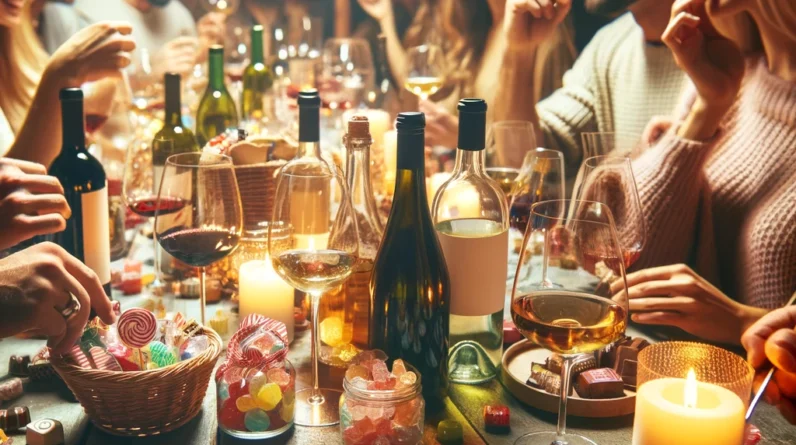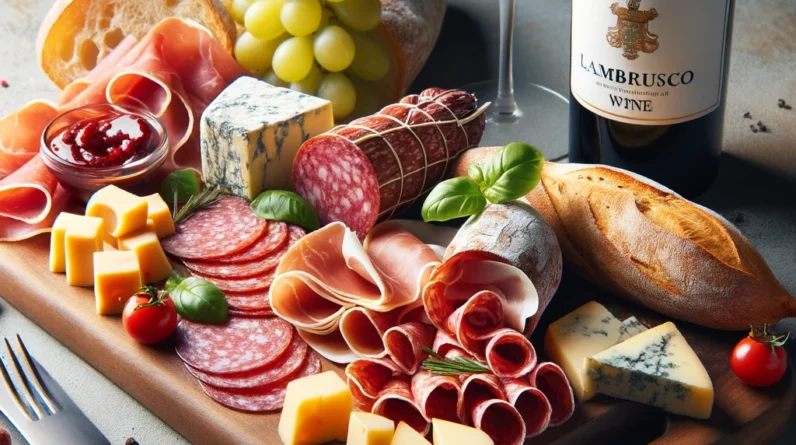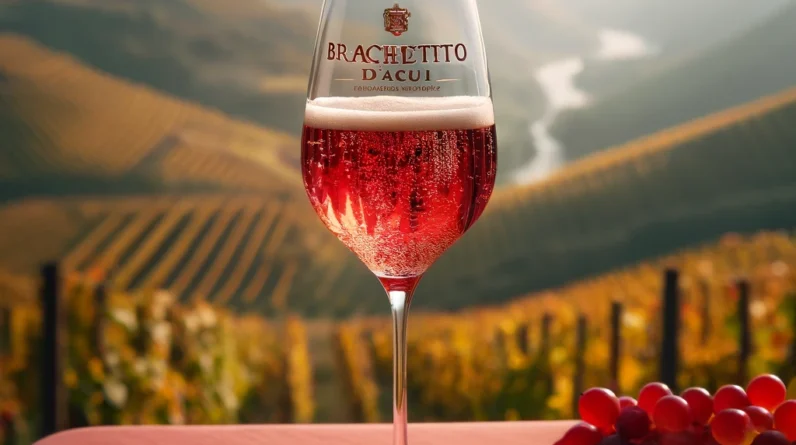
Best Red Wine Pairings for Artisanal Cheeses: A Guide for the Connoisseur
Delving into the art of pairing red wine with artisanal cheese offers a delightful exploration of tastes and textures.
Table of Contents
ToggleThis guide expands on classic combinations, providing specific examples and insights for those who appreciate the nuances of quality wine and cheese.
Understanding the Basics
Red wines vary in body, flavor, and tannin structure, influencing their pairing suitability.
Similarly, artisanal cheeses, with their diverse textures and flavor profiles, can range from soft and creamy to hard and pungent.
A successful pairing is about creating harmony where the properties of the wine and cheese enhance each other.

Pairing 1: Pinot Noir and Brie
Wine
Choose a Pinot Noir from Burgundy, France, known for its delicate, nuanced flavor profile, with notes of cherries and raspberries.
Cheese
Brie de Meaux, a French Brie, offers a creamy, rich texture with a hint of earthiness.
Experience
The subtle fruitiness of the Pinot Noir complements the creamy richness of the Brie, creating a smooth, luxurious taste experience.
Pairing 2: Merlot and Gouda
Wine
Opt for a smooth, plum-flavored Merlot from Napa Valley, which often carries a touch of herbal notes.
Cheese
Aged Gouda from the Netherlands, with its caramel sweetness and crystalline texture, pairs beautifully.
Experience
The Merlot’s softness melds with the Gouda’s sweet, nutty flavors, offering a blend of textures and a lingering, velvety finish.
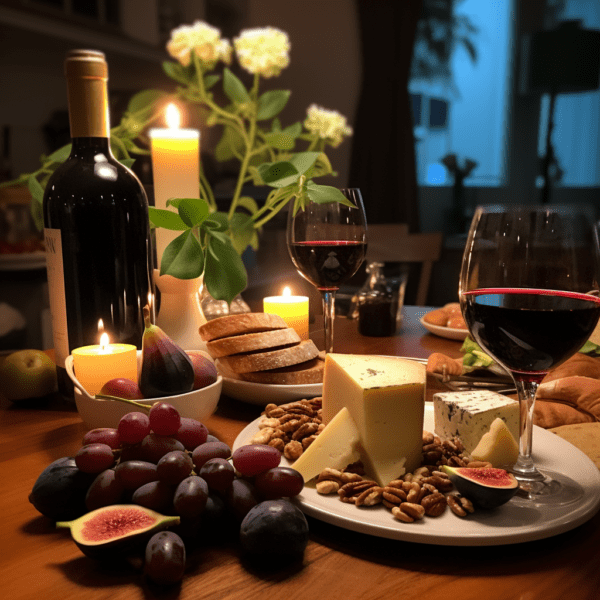
Pairing 3: Cabernet Sauvignon and Aged Cheddar
Wine
A bold, tannic Cabernet Sauvignon from Bordeaux, rich in blackcurrant and cedar notes.
Cheese
An English Aged Cheddar, known for its sharpness and slightly crumbly texture.
Experience
The wine’s robust character balances the intensity of the Cheddar, making for a pairing that is both bold and satisfying.
Pairing 4: Syrah/Shiraz and Smoked Gouda
Wine
Australian Shiraz, renowned for its spicy, full-bodied profile with hints of black pepper and licorice.
Cheese
Smoked Gouda, preferably smoked over hickory, offers a deep, smoky flavor with a smooth, creamy texture.
Experience
The spiciness of the Shiraz enhances the smoky nuances of the Gouda, creating a dynamic and memorable pairing.
Exploring the world of red wine and artisanal cheese pairings is a journey of discovery.
Each pairing offers its unique conversation of flavors and textures.
Whether you’re a seasoned connoisseur or a curious novice, these combinations provide a delightful exploration into the sophisticated world of food and wine.
Feel encouraged to explore beyond these pairings.
The world of wine and cheese is vast and full of surprises.
Your perfect pairing is waiting to be discovered, tailored to your individual palate.
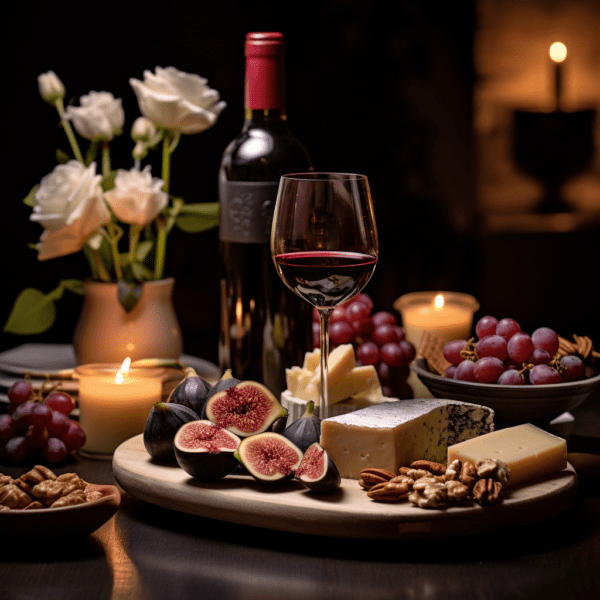
Here is a table that summarizes the pairings, including specific wines, cheeses, their ideal serving temperatures, and suggested glassware.
This comprehensive overview will enhance the overall tasting experience by considering all essential aspects of serving and enjoying these pairings.
This table serves as a guide to creating an exquisite wine and cheese tasting experience, paying attention to all the details that matter.
| Pairing Number | Wine (Example) | Cheese (Example) | Wine Serving Temperature | Cheese Serving Temperature | Wine Glassware | Cheese Presentation |
|---|---|---|---|---|---|---|
| 1 | Burgundy Pinot Noir (e.g., Louis Jadot) | Brie de Meaux | 55-60°F (13-16°C) | Room Temperature (68-70°F, 20-21°C) | Burgundy glass, wide bowl | On a wooden cheese board, slightly chilled |
| 2 | Napa Valley Merlot (e.g., Duckhorn Vineyards) | Aged Gouda | 60-65°F (16-18°C) | Room Temperature (68-70°F, 20-21°C) | Standard red wine glass | Sliced or chunked on a slate board |
| 3 | Bordeaux Cabernet Sauvignon (e.g., Château Margaux) | English Aged Cheddar | 60-65°F (16-18°C) | Room Temperature (68-70°F, 20-21°C) | Bordeaux glass, tall bowl | Cubed or in small wedges on a ceramic plate |
| 4 | Australian Shiraz (e.g., Penfolds Grange) | Smoked Gouda | 65-70°F (18-21°C) | Room Temperature (68-70°F, 20-21°C) | Shiraz glass, broad bowl | Sliced thinly on a glass or marble board |
Additional Notes:
Wine Serving Temperature
Serving wine at the right temperature is important.
Reds are often served too warm; the listed temperatures will ensure the flavors are optimally expressed.
Cheese Serving Temperature
Cheese should be served at room temperature to fully appreciate its texture and flavor nuances.
Wine Glassware
Specific glass shapes enhance the wine’s aroma and taste.
A wide bowl for Pinot Noir, a standard red wine glass for Merlot, a tall bowl for Cabernet Sauvignon, and a broad bowl for Shiraz are ideal.
Cheese Presentation
The presentation of cheese also impacts its enjoyment.
Wooden boards, slate, ceramic, glass, or marble surfaces can be used, depending on the cheese’s texture and moisture.
Enhancing the Wine and Cheese Experience
Enhancing the wine and cheese experience can involve introducing complementary elements that accentuate the flavors and textures of the pairings.
Here are some additions that can elevate the overall tasting.
Charcuterie
Adding a selection of cured meats like prosciutto, salami, or chorizo can introduce a savory contrast to both the wine and cheese.
Fruits and Nuts
Fresh fruits like grapes, figs, apples, or pears, and nuts like almonds, walnuts, or hazelnuts offer a natural sweetness or crunch that pairs well with both wine and cheese.
Artisanal Breads and Crackers
Fresh, crusty bread or a variety of crackers provide a neutral base that helps to cleanse the palate between different wine and cheese tastes.
Olives and Pickles
The briny and tangy flavors of olives and pickles can complement the richness of the cheeses and the complexity of the wines.
Honey and Jams
Drizzling honey over cheese or offering a selection of jams and preserves (like fig jam or apricot preserves) can add a delightful sweetness and depth to the pairing.
Dark Chocolate
A piece of high-quality dark chocolate can enhance the depth and richness of red wines, especially with full-bodied varieties.
Herbs and Spices
Garnishing with fresh herbs like basil or rosemary, or a sprinkle of spices like black pepper or paprika on the cheese can introduce an aromatic element to the pairing.
Edible Flowers
For a visual and flavorful touch, edible flowers like nasturtiums or violets can be added to the cheese board.
Incorporating these elements not only adds to the flavor complexity but also turns the wine and cheese tasting into a more holistic gastronomic experience.
It encourages exploration and interaction, making the tasting both engaging and enjoyable.
Remember, the key is balance and experimentation to see what combinations resonate best with your specific wine and cheese selections.
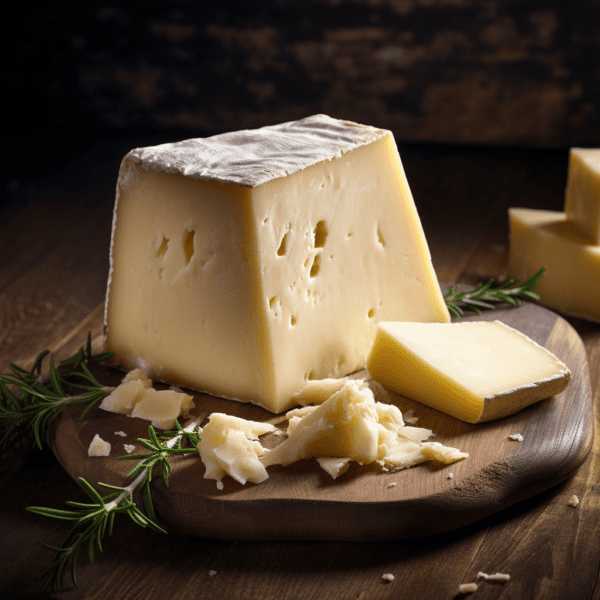
Where to Buy the Wines and the Artisanal Cheeses?
For purchasing artisanal cheeses and red wines online, here are some recommended sources.
Artisanal Cheeses:
igourmet.com: Offers a vast selection of artisan cheeses, gourmet gift baskets, and specialty foods from around the world.
They also feature gourmet pantry ingredients and charcuterie.
The Rhined at Findlay Market: Specializes in domestic, artisanal cheese and offers a range of regional selections.
They also provide cheese flights, wine, beer, and cheese education events.
Artisanal Premium Cheese: Provides a variety of artisanal cheeses, including collections and featured cheese and artisanal breads.
Ditalia Fine Italian Imports: Features Italy’s finest imported cheeses and artisan Italian American cheeses.
They offer a selection of Italian DOP cheeses like Parmigiano Reggiano, Grana Padano, Montasio, and Asiago.
Green Dirt Farm: Sells artisan sheep milk cheese online.
They also offer gourmet sandwiches, charcuterie boards, beer, wine, and other foods and crafts from local small-batch makers.
Red Wines:
Wine.com: Provides a wide selection of red wines, white wines, champagnes, and more, with free shipping options and expert guidance to help choose the best wine.
Total Wine & More: Offers a vast range of red wines, including Pinot Noir, Cabernet Sauvignon, and others, with options for pick-up or delivery.
Buy Wines Online: Features a red wine collection that includes exceptional wines made from the world’s most popular red grape varietals, from renowned wineries around the globe.
JJ Buckley Fine Wines: Offers a selection of finely crafted red wines with detailed descriptions and ratings, catering to a range of tastes and preferences.
These online retailers provide a wide array of options for both artisanal cheeses and red wines, suitable for various preferences and occasions.
Whether you’re looking for specific cheese varieties or a selection of red wines to pair with them, these sources offer quality products that can enhance any wine and cheese experience.
How to Elevate Your Overall Wine and Cheese Experience?
For a connoisseur looking to elevate your cheese and wine experience, we offer several nuanced approaches and creative ideas to consider.
Themed Tasting Events
Organize tastings around specific themes, like wines and cheeses from a particular region, vintage-focused wine tastings, or exploring rare and unusual cheese varieties.
This not only educates but also adds an element of adventure to the tasting.
Vertical and Horizontal Wine Tastings
A vertical tasting involves wines from the same vineyard but different years, while a horizontal tasting compares wines from the same year but different vineyards.
Pair these with cheeses that complement the wine’s evolution or regional characteristics.
Wine and Cheese Journals
Keeping a journal of different pairings, noting flavors, textures, and personal impressions, can deepen understanding and appreciation.
This record becomes a valuable reference and a personal journey through the world of wine and cheese.
Experiment with Cheese Aging
If you have the right conditions, try aging cheeses yourself.
Aging can dramatically change a cheese’s flavor and texture, offering a unique experience when paired with wine.
Attend Masterclasses or Workshops
Participate in workshops or classes led by sommeliers or cheese experts.
These educational experiences can provide deeper insights into the art of pairing and selecting wine and cheese.
Pairing with Wine Derivatives
Experiment with products made from wine, like vinegars or grape-seed oils, in your cheese platters.
They can add an interesting dimension to the traditional wine and cheese pairing.
Explore Unconventional Pairings
Beyond the classic pairings, explore unconventional ones like blue cheese with sweet dessert wines or fresh goat cheese with sparkling wines.
These can offer surprising and delightful flavor contrasts.
Temperature Experimentation
Play around with serving temperatures.
Slightly chilling a red wine or allowing a cheese to warm to room temperature can dramatically change the tasting experience.
Use of Aromatics
Incorporate aromatic elements like truffle honey or herbed nuts alongside your cheese and wine.
These can elevate the sensory experience by engaging more than just the taste buds.
Wine and Cheese Clubs or Subscriptions
Joining clubs or subscriptions can introduce you to a curated selection of wines and cheeses, often with expert notes and pairing suggestions, which can broaden your horizons.
Each of these suggestions offers a pathway to deepen your appreciation and understanding of wine and cheese, turning each tasting into a memorable and educational experience.
Remember, the world of wine and cheese is as much about personal discovery as it is about the flavors on the plate and in the glass.
FAQs:
Q: What are the best red wines to pair with cheese?
A: The best red wines for cheese pairings include Pinot Noir, Merlot, Cabernet Sauvignon, and Shiraz.
Each has distinct characteristics that complement different types of cheeses, from creamy Brie to aged Cheddar.
Q: Can I pair strong cheeses with light-bodied red wines?
A: Generally, it’s best to match the intensity of the cheese with the wine.
Strong cheeses might overpower light-bodied red wines.
However, experimenting with contrasting flavors can sometimes yield delightful results.
Q: What temperature should red wine and cheese be served at?
A: Serve red wine slightly cooler than room temperature, around 55-70°F (13-21°C), depending on the variety.
Cheese should be served at room temperature, around 68-70°F (20-21°C), to fully appreciate its flavor and texture.
Q: How do I choose a cheese to pair with my favorite red wine?
A: Start by considering the body and flavor profile of the wine.
Full-bodied wines pair well with aged, robust cheeses, while lighter wines complement softer, milder cheeses.
Trial and error, along with personal preference, play a significant role.
Q: Are there any red wines that don’t pair well with cheese?
A: Some very tannic or highly acidic red wines might clash with certain cheeses.
It’s important to balance the tannins in the wine with the fat content and flavor intensity of the cheese.
Q: Can I pair red wine with blue cheese?
A: Absolutely. Rich, sweet red wines like Port or late-harvest wines can pair wonderfully with the bold flavors of blue cheese, creating a balance of sweet and savory.
Q: How much cheese should I serve per person for a wine and cheese tasting?
A: A general guideline is about 1 to 1.5 ounces (30-45 grams) of each cheese per person if you’re serving multiple types.
Q: What are some good accompaniments for a red wine and cheese pairing?
A: Accompaniments like fresh or dried fruits, nuts, honey, charcuterie, olives, and artisanal bread or crackers can enhance the tasting experience.
Q: Should the wine or cheese be the focal point of the pairing?
A: It depends on personal preference.
Some prefer to highlight the wine and choose cheeses that complement it, while others focus on the cheese with wines that enhance their flavors.
Q: How do I balance flavors in a wine and cheese pairing?
A: Aim for harmony between the wine and cheese.
The goal is to complement or contrast flavors without one overpowering the other.
Consider aspects like texture, fat content, acidity, and tannins.



